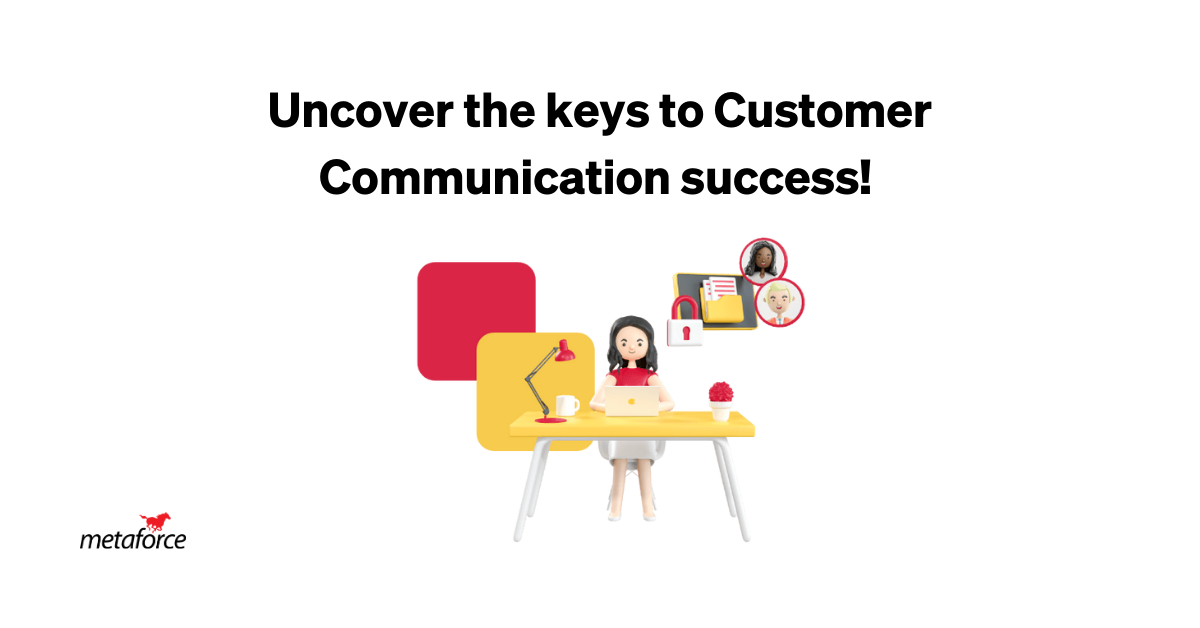For most businesses, the primary driver for customer communication is long-term success and profitability. Investing in communication that utilizes customer data is a strategic approach focused on cultivating robust relationships, attaining a competitive edge, and optimizing operational efficiency. Let’s look at the business-oriented facets of these essential drivers:
Strengthening customer relationships: In the realm of customer communication, it's not just about conveying messages; it's about creating a connection. Relevant, clear, timely, and personalized communication establishes trust, reduces uncertainty, and elevates customer satisfaction. When customers feel seen, understood, and supported, brand loyalty is fostered, leading to repeat purchases and advocacy.
Gaining a competitive edge: Mastering data-driven communication is all about being able to engage in meaningful dialogues. And competitiveness is about providing highly tailored online dialogs and self-service options that resonate with the expectations of "digital natives." This advantage isn't just about attracting and retaining customers; it's about meeting their evolving demands for access anytime, anywhere.
Optimizing operational efficiency: Improved communication correlates with greater efficiency and cost savings. Clear, relevant communication reduces misunderstandings, errors, and unnecessary follow-ups, saving both time and resources. But implementing automated communication systems or self-service options isn't just a cost-saving measure; it's also a strategic move to meet customer needs seamlessly.
Barriers to future state
Many businesses aspire to automate customer dialogue through their data, yet several obstacles stand in the way. The primary challenge often lies in the mix of silo-based systems, a shortage of qualified IT personnel, and a lack of a companywide strategy for customer communication.
When data is dispersed across various systems, meeting communication goals becomes challenging. This situation often leads to the creation of specialized tools for each channel and business area—for instance, distinct solutions for document handling, policy printing, quoting, and smart online dialogs
The outcome? A multitude of ad-hoc department-based solutions that are time-consuming and expensive to develop and maintain and that often require continuous support from IT. And as IT support often are in short supply, new innovative customer communication solutions take a long time to deliver.
Addressing challenges
To overcome these challenges, it requires more than technological expertise; it's about aligning exceptional customer communication with the unique value proposition of the company. A comprehensive strategy ensuring success at low risk, within a defined time and budget, and which is sustainable for future growth is imperative. Evaluating the benefits of consolidating communication across documents and smart online dialogs serves as a benchmark when selecting a communication platform. As the CCM industry converges with the CXM market, selecting a platform that supports both is crucial for reducing complexity.
Strategic steps to follow:
- Form a small cross-functional team comprising customer service enthusiasts, communication experts, and knowledgeable IT professionals with expertise in data and integrations.
- Select a low-code, cloud-based Digital Document Automation Services platform to manage templates and rules centrally for efficient production, distribution, notification, e-signing, and archiving.
- Choose a communication process for improvement and build a prototype as a pilot project to calculate time and budget for real-life implementation.
Adopting this three-step approach and selecting a CXM & CCM combined platform ensures rapid addition of new communication processes with minimal IT support. Additionally, embracing a SaaS platform provides access to leading expertise, guiding the journey toward unparalleled customer communication success.
It’s evident that transforming customer communications isn't just a technological shift; it's a strategic commitment. Strengthening relationships, gaining a competitive edge, and optimizing efficiency are the cornerstones of customer-centricity. Overcoming challenges demands a comprehensive strategy, steering businesses toward success. Leveraging variable data for personalized communication, coupled with user-friendly forms and workflows, is paramount. Centralizing rules for managing dialogues, including e-signatures, within a single platform empowers efficient work organization in a Customer Communication Center-of-Excellence (CoE), offering a strategic advantage.
Feel free to reach out to us at Metaforce for a detailed discussion on how we can assist you on this journey.

